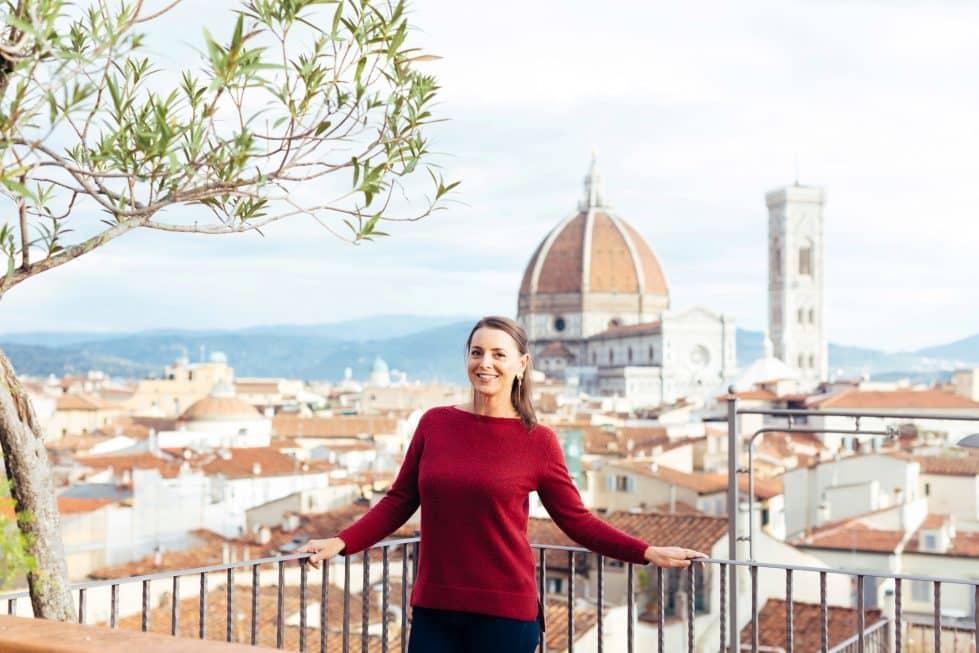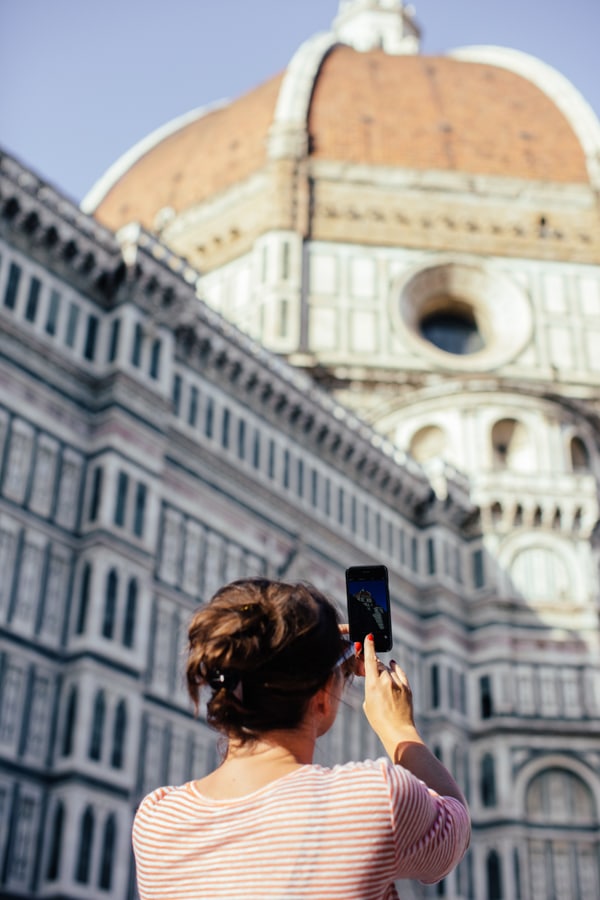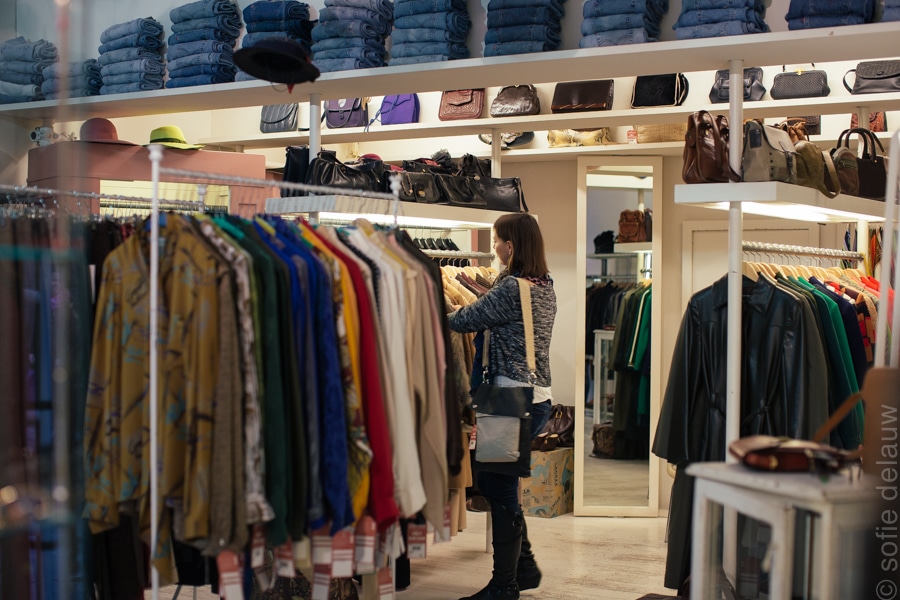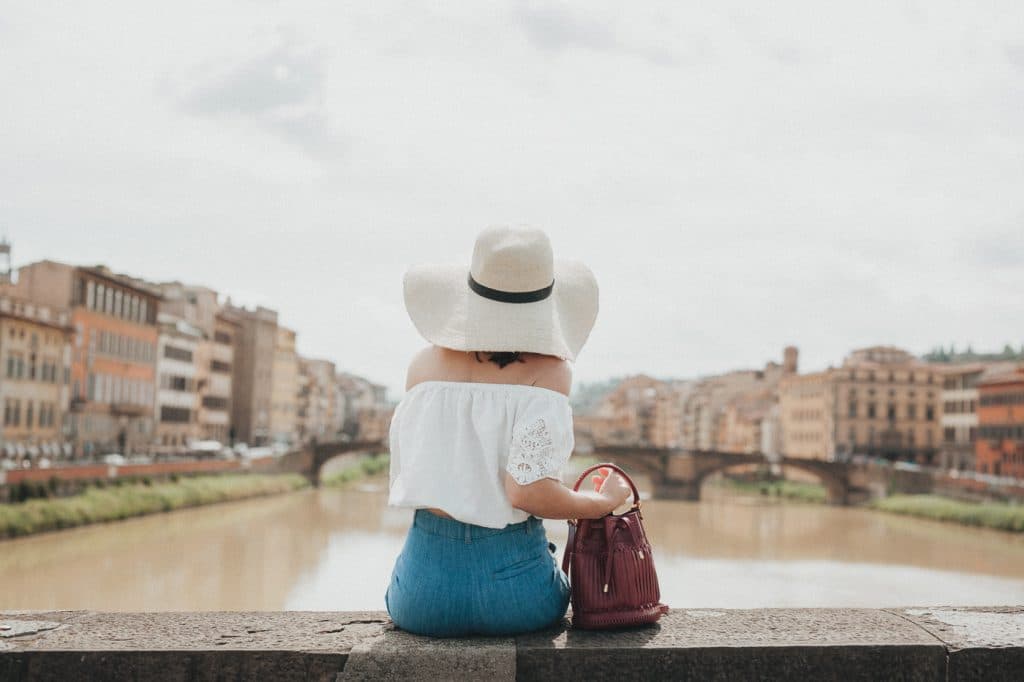The journalist and author of Lost in Florence shares her passion for the Renaissance capital.
Nardia is also the author of Florence Beyond Overtourism in the September 2019 issue of Dream of Italy.
Nardia Plumridge is an Australian writer who did what many of us dream to do – pack up and move to Italy. After living in London for ten years, the lure of Italy, a country she discovered in her teens, still stuck and she spent the fall of 2010 immersed in la dolce vita in her favourite city, Florence. Those few month turned into years during which she launched website, Lost in Florence, to celebrate the independent artisans of the city she had met and admired, those keeping the traditions of craftsmanship alive with a modern twist. The website has featured in Lonely Planet and Forbes, among other notable publications, and recently made into a book by renowned lifestyle publisher, Hardie Grant; it is being translated into Italian for a spring 2020 release by respected Italian publisher, Giunti Editore.
1. You’re from Australia, originally. How did you end up living in Florence?
My love affair with Florence runs deep and began on my 15th birthday. I was traveling through Europe with my parents and sister and by complete chance we ended up in Florence. I remember celebrating in a trattoria with lots of frivolity. And something just clicked. Even though we had visited London, Paris, Amsterdam and later Rome and Athens, Florence stayed in my heart and I vowed that birthday night to return one day when I was older to live ‘for a summer’, which I eventually did in 2010.
2. How has Florence changed in the years you’ve lived there?
Quite a lot, actually. My first adult experiences were in the early 2000’s when my sister lived in Florence over five years. I was in London at the time so would come out regularly for long weekends or holiday trips over Easter and Christmas. I remember Italy when the lira was still in use! The biggest change has been in more recent years. For example, in 2010 Piazza Santo Spirito was very bohemian with bars like Volume filled with students from Charles Cecil’s studio sketching strangers and playing chess. Now it is filled with travelers in the know that Oltrarno is considered the place to be. Florence a few years ago was yet to see the recent influx of sleek industrial style venues and craft coffee that has become more normalized, and winters were still quiet and without the tour groups – that doesn’t exist anymore.
3. It probably has become more crowded. What’s your take on over tourism in Florence?
It’s a tricky one because ultimately I am a tourist in Italy too. However the difference is the between someone who wants to really immerse themselves in the city and culture, and those who are simply checking off a to-do list without enjoying it for a deeper experience, rather just for an Instagram picture. Many people visit Florence for a day and visit the three main squares and two key galleries then leave. They don’t take it slow and more importantly, give back to the community with the tourist dollar. That is something I am keen to promote more of – sustainable and slow travel in Italy and beyond. The best way to do this is stay a few days and put your tourist dollar into local businesses.
4. What are some ways visitors can still get Lost in Florence?
Florence is a such an incredible city as it offers everything en masse – from culture pursuits with its galleries and museums (over 100 of them), to incredible eateries for classic or contemporary Italian dishes. To get lost is literally to take a street or two back from the main thoroughfares and wander, explore, and say ciao to a shopkeeper. They will often give you insider tips on what to see and do. Stay at a boutique hotel like the new Peruzzi Residences or Splendid Oltrarno where you’ll live like a local and be treated like a friend. Plus you’re investing in local businesses, which I feel is so important.
5. Do you have a strategy or recommended tour guide for seeing the art on a first trip to Florence?
Guides are fantastic and like any teacher, you’ll get more out of a great one. ArtViva and Context Travel offer wonderful tours with small groups using qualified guides. Taste Florence is an original food tour company ideal for a morning at the markets. For a private tour, I adore Alexandra Lawrence at Explore Florence.
6. And Florence isn’t just about historical art; modern art plays a role in the city. Where do you like to enjoy it?
Casamonti Collection is a lovely space to pop into for modern pieces and inside Palazzo Bartolini Salimbeni; Forte Belvedere in the summer for its sculpture exhibitions and city views; Palazzo Strozzi hosts beautifully curated shows all year round; and Gallery Hotel Art foyer for their latest mini show with a cocktail afterwards at Fusion Bar.
7. Who are some of your favorite locals and where can we meet them?
Sara Amrhein is a Californian native ensconced in Florence and makes incredible jewelry from polymer clay and beading. Her designs are bright and bold with her studio tucked by Piazza della Passera just near Ponte Vecchio.
Clara Soto is another favorite and her shop/studio on Via del Moro showcases her hand made bags plus jewelry by her artisan mother based in Argentina.
Jane Harman has a quaint store in San Frediano with unique wooden pieces for the home or to wear – her background is as a restorer and she has branched out with pieces ideal to take home as a souvenir.
Sbigoli Terrecotte, just down the road from the Duomo, is a favorite for hand painted pottery from a family run business that dates back to 1857. Antonella Chini Adami, who is now in her 80s, is still hand painting the terracotta pieces and everything is still fired in their on-site kiln.
8. I am always asked the best places to buy leather in Florence. Can you share a favorite or two?
I adore the old world charm at Scuola del Cuoio that is housed in the back of Santa Croce church. Just finding it is half the fun plus their products are authentic and stylish. Benheart is a recent addition to the shopping scene, a local designer with a passion for quality leather and modern fashion pieces. Great for jackets and handbags in the softest leather.
9. What is another interesting souvenir or gift visitors can buy in Florence?
Florence Factory opened in 2018 on via dei Neri as a showroom of local artisans in one place. From fashion to ceramics and home wears, they curate the best items from the nearby workshops. Owners Jacopo and Lorenzo believe in supporting local talent. Being a book lover and writer, the handmade paper and leather bound notebooks at Il Torchio by Erin Ciulla is a favorite – pop in to see her at work, as her space is half shop, half studio. Also the markets in Piazza Santo Spirito every second Sunday each month have vintage and new items for the home.
10. What are the must-eat dishes in Florence and where do you recommend visitors try each of them?
For the adventurous, lamprodotto is a must try even once – Da Nerbone within the food market at San Lorenzo is ideal early in the morning for this offal sandwich washed down with a glass of chianti wine. Cingiale, wild boar, is a favorite ragu with pappardelle pasta. I love the simple surrounds of Trattoria dell’Orto in San Frediano for this dish. As a truffle lover, the finger sandwiches and wine selection at Procacci can’t be beat.
11. I love in the book how you detail different daylong itineraries depending on what a visitor is seeking? If you had to create your own ideal day in Florence, what would be on the itinerary?
It would be a mix of the four itineraries I wrote for the book, Lost in Florence. Start the day at Caffe Gilli for a cappuccino, pastries and people watching, next a stroll around Palazzo Strozzi for their latest exhibition, then window shop around via Tornabouni and Borgo Santi Apostoli. Lunch at Il Santo Bevitore in Santo Spirito, then peruse the jewelry at Angela Caputi a few doors down post meal. Aperitivo at sunset at Se.Sto on the rooftop top of the Westin Excelsior, dinner and a show at Teatro del Sale in Sant Ambrogio. The beauty of Florence is there is so much to do, so you can mix it up depending on your mood for food, culture, or shopping.
12. Which market do you frequent the most and why?
For food, Sant ‘Ambrogio is the most authentic and great to grab your seasonal veggies; the antiques at Fortezza da Basso on third weekend each month are fun to peruse for dressing the home; for cheap home wares head to Cascine Park on a Tuesday morning with its 3km stretch of stalls along the river Arno open until 2pm.
13. I know it is hard to choose but where is your favorite place to get gelato and which flavors do you order?
Location is always key – depending on where I am in the city. I am often riverside so Gelateria Santa Trinita for their black sesame and La Carraia for their cheesecake, every time!
14. What still surprises you about Florence?
Even after all these years I still get a thrill from Florence. It is a city buzzing and constantly evolving with new eateries, galleries and venues with 21st century flair. The continued passion of artists and artisans keep the city alive in a very uniquely Florentine way with their studio set ups and focus on hand crafted goods. There really isn’t a city like Florence anywhere else in the world.
“Lost in Florence: An insider’s guide to the best places to eat, drink, and explore” is released worldwide by Hardie Grant. Discover more at http://www.lostinflorence.it






